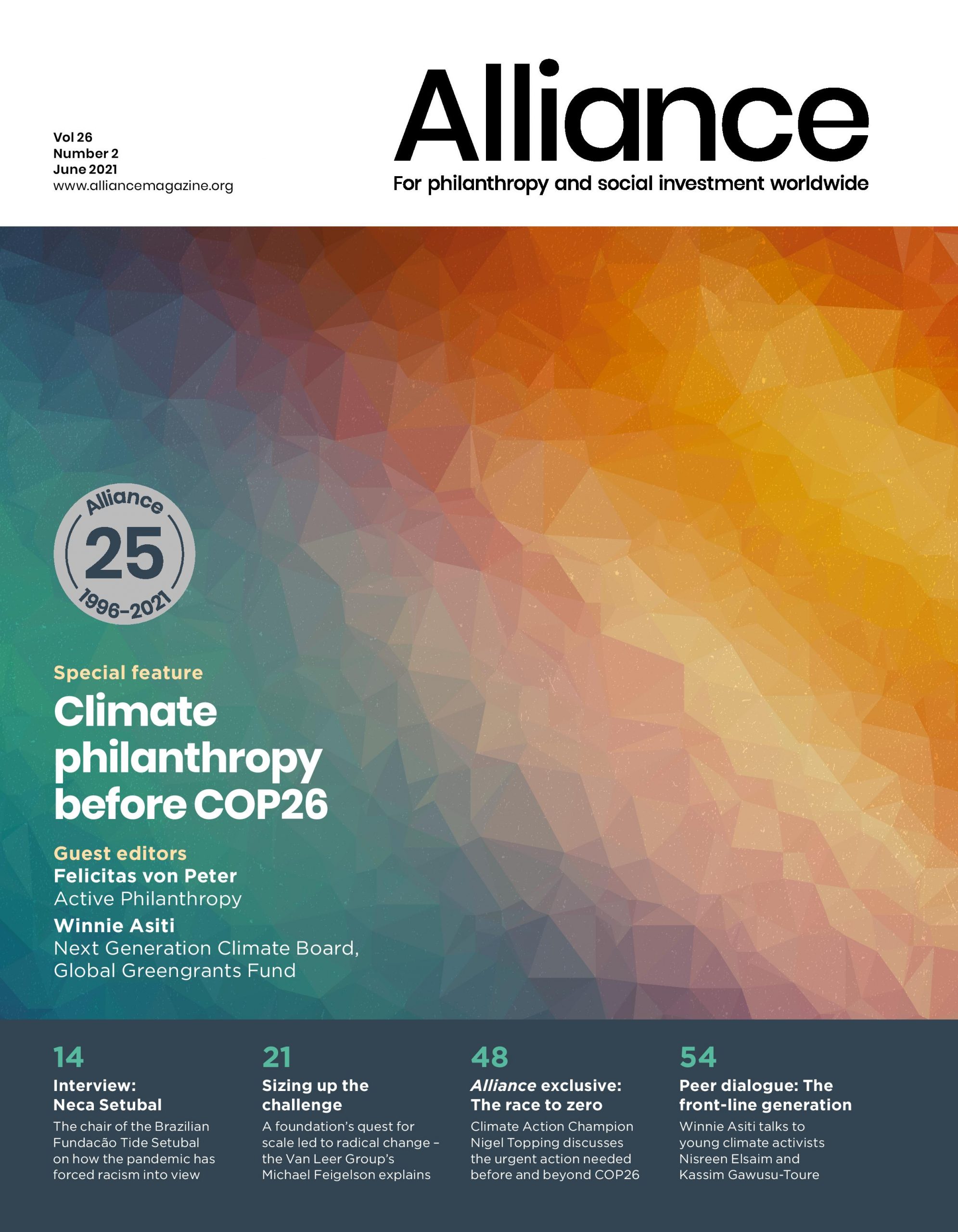Foundations’ financial role in reaching a net zero carbon future is not confined to the money they give away
The amount of philanthropic funding currently going towards the world’s gravest problem is clearly inadequate. But while we cannot expect every foundation to focus their grantmaking on climate action, foundations can contribute by reducing the emissions financed through their investment portfolios.
Let’s imagine that an investor holds a position in a fossil fuel company. Should the investor simply divest? The problem is that this does not change the company’s emissions performance, because other investors may step in to fill the gap. Another approach is to begin a dialogue with the company and push for a strategy aligned with the 2015 Paris Agreement.
For a foundation, using its influence to change a company for the better seems a natural extension of its mission. If it decides to go down this route, the board should discuss whether to approach climate risk from an ethical angle (fossil fuels are bad!) or a financial angle (risk versus reward).
In my view, this means a foundation can remain invested if it uses its influence to push the company for change via an engagement process. Preferably a foundation should collaborate with an initiative such as Climate Action 100+ or instruct its investment manager or a specialised engagement service provider to do this on its behalf.
If the speed or direction of change is insufficient, voting rights should be used. But if the company fails to show progress, divestment should be considered.
Beyond this, I believe foundations can start greening their investments following this six-step guide for foundation boards.
Step 1: Board-level agreement
Before a foundation goes into the marketplace, it should agree at board level how climate change relates to its investment beliefs. For example, if an investor believes that investments can only provide good returns in a stable economy and society, is it willing to accept that climate change poses a major risk to that stability? The UN-backed Principles for Responsible Investment (PRI) has some great resources to help with this discussion.
Step 2: Governance
Who will be responsible for climate performance? Is it the chief investment officer or the CEO of the foundation? If an investor believes its sustainability performance is as important as its financial performance, then CEO-level responsibility sends a powerful signal both within and outside the foundation. The World Economic Forum provides some good guidance on this.
Step 3: Framework
Boards should consider what type of framework they would like to use to address the impact of climate change on the portfolio. Where are the climate risks? Where are the opportunities? And how do you quantify them? The Taskforce for Climate Related Financial Disclosure offers a good framework to do this.
Step 4: Baseline assessment
If the intention is to decrease emissions in the real economy, it is important to be able to track the quantity of emissions financed by investments. The Global Standard advocated by the Partnership for Carbon Accounting Financials provides tools to measure an investment portfolio’s carbon footprint in a given time period.
Step 5: Targets
Once the foundation has established a baseline, it can discuss what targets it would like to set to decrease its emissions. The Science Based Targets Initiative guidance to financial institutions provides a framework suggesting how investors can set such targets and align their lending and investment activities with the Paris Agreement.
Step 6: Future risk
Steps one to five relate to how an investor can have impact today. But climate change also impacts future investment risk. PACTA provides a free online tool that shows how investments will align with the Paris Agreement in the future. By combining this data with the emission intensity of the carbon footprint, the investor can identify the biggest risks in its portfolio.
The transition to a net zero future can only happen with unprecedented collaboration.
At the end of the day, when financiers themselves get serious about taking climate action, companies in every other industry have no choice but to follow.
Nando van Kleeff is programme manager for Climate Action at the IKEA Foundation.
Email: nando.vankleeff@ikeafoundation.org
Twitter: @NandoVanKleeff




Comments (0)